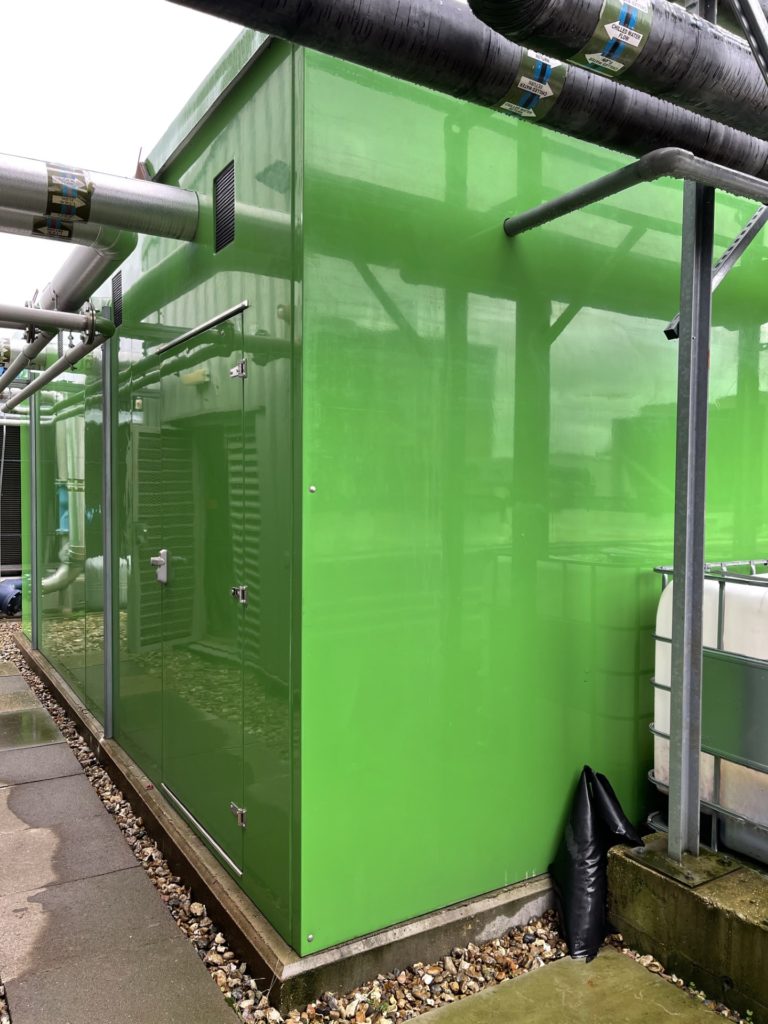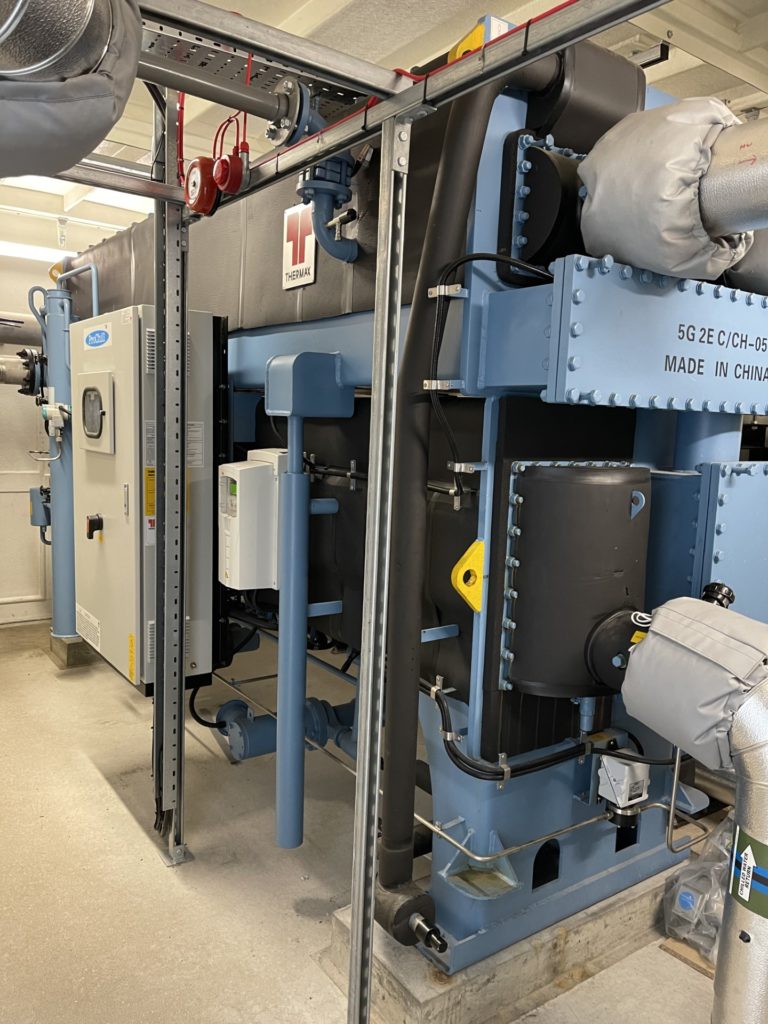How Absorption Chillers Provide Effective Cooling for Overheated Data Centres- to optimise high performance in Data Centres
Discover how absorption chillers provide cost-effective, energy-efficient cooling for data centres, ensuring peak performance while reducing carbon footprints. Learn why modern facilities are switching to this game-changing cooling technology!



Why cooling matters in Data Centres:
Data centres generate over 50 million tons of CO₂ annually – cooling is critical!
Overheating is a major issue in high-performance computing, leading to equipment failures, data loss, and increased operational costs. As data centres grow in size and capacity, the need for efficient cooling solutions becomes more pressing. Absorption chillers are a cutting-edge solution that offers efficient and sustainable cooling to keep data centres running optimally.
What are absorption chillers, simplified?
Absorption chillers use heat instead of electricity to drive the cooling process. Unlike conventional compressor-based chillers, they rely on a heat source (such as waste heat or renewable energy) to evaporate a refrigerant, which then absorbs heat from the environment. This process is energy-efficient and eco-friendly, reducing reliance on electricity and lowering greenhouse gas emissions.
Absorption chillers differ from traditional chillers in several key ways. Traditional chillers use mechanical compressors to circulate refrigerant, which requires a significant amount of electricity. In contrast, absorption chillers use a thermal compressor, which operates using heat energy. This fundamental difference allows absorption chillers to utilize waste heat from industrial processes or renewable energy sources, making them a more sustainable option.
How absorption chillers work- simplified for readers:
Absorption chillers operate through a series of steps:
- Heat Source: Provides the energy needed to drive the cooling process. This can come from waste heat, solar energy, or other renewable sources.
- Refrigerant: Typically water, which evaporates and absorbs heat. The refrigerant is a crucial component that facilitates the cooling process.
- Absorber: This device absorbs the refrigerant vapor, creating a cooling effect. It contains a solution, often lithium bromide.
- Evaporator: Where the refrigerant evaporates, absorbing heat from the data centre. This is the stage where the actual cooling occurs, as the refrigerant absorbs heat from the environment.
- Condenser: Condenses the refrigerant back into a liquid, releasing the absorbed heat. The condenser expels the absorbed heat, completing the cycle.
This cycle repeats, providing continuous cooling. A clear infographic or diagram can visually explain these components and their interactions, making it easier for readers to understand the process.
Why data centres are turning to, and should turn to absorption chillers:
Traditional cooling methods consume vast amounts of energy, making sustainability a pressing concern. Data centres are among the most energy-intensive facilities, with cooling systems accounting for a significant portion of their energy consumption. Absorption chillers address this by utilizing waste heat and renewable energy sources, significantly improving energy efficiency. This shift towards green technology helps data centres reduce their carbon footprint and operational costs.
The need for sustainability in data centres is driven by several factors. Firstly, the increasing demand for data storage and processing power means that data centres are expanding rapidly. This growth leads to higher energy consumption and greater environmental impact. Secondly, regulatory pressures and corporate sustainability goals are pushing data centres to adopt greener technologies. Absorption chillers offer a viable solution to these challenges by providing efficient and eco-friendly cooling.
Key Benefits of Absorption Chillers for Data Centres:
- Energy Efficiency: Absorption chillers use significantly less electricity compared to traditional systems, as they rely on heat energy to drive the cooling process. This results in lower power usage and reduced strain on the electrical grid.
- Lower Operating Costs: By utilizing waste heat, absorption chillers can reduce electricity bills and overall operating costs. This is particularly beneficial for data centres that generate large amounts of waste heat from their servers and other equipment.
- Eco-Friendly: Absorption chillers reduce carbon footprint by emitting fewer greenhouse gases. They use natural refrigerants, such as water, which have a lower environmental impact compared to synthetic refrigerants used in traditional chillers.
- Reliability & Performance: Absorption chillers provide consistent cooling, ensuring that servers remain operational 24/7 without failures. Their robust design and fewer moving parts result in lower maintenance requirements and higher reliability.
Real-World Use Cases & Success Stories:
Several data centres have successfully implemented absorption cooling. For instance, a data centre located next to a power plant uses waste heat from the power station to drive its absorption chillers. This innovative approach not only reduces energy consumption but also minimizes the environmental impact of the data centre.
Leading tech giants like Google and Amazon are also investing in energy-efficient cooling solutions to enhance sustainability. Google has implemented absorption chillers in some of its data centres, leveraging waste heat from nearby industrial processes. Amazon Web Services (AWS) has also explored the use of absorption chillers to improve the energy efficiency of its data centres.
These real-world examples demonstrate the effectiveness of absorption chillers in reducing energy consumption and operational costs while maintaining high performance and reliability.
How to Implement Absorption Chillers in Your Data Centre
- Assess Your Needs: Determine your facility size and energy requirements. Conduct a thorough analysis of your current cooling system and identify areas where absorption chillers can be integrated.
- Choose the Right System: Select an absorption chiller that matches your needs. Consider factors such as cooling capacity, heat source availability, and compatibility with your existing infrastructure.
- Integration: Follow a step-by-step guide to integrate the system into your existing infrastructure. Work with experienced professionals to ensure a smooth installation process.
- Cost vs. ROI: Evaluate the long-term savings and return on investment. Calculate the potential energy savings and reduced operating costs to determine the financial benefits of switching to absorption chillers.
Future Trends in Data Centre Cooling
- AI-Powered Cooling Systems: AI optimizes cooling by predicting demand and adjusting in real-time. Advanced algorithms can analyse data from sensors and adjust cooling parameters to maximize efficiency and minimize energy consumption.
- Liquid Cooling vs. Absorption Cooling: Both methods offer significant energy savings, with liquid cooling becoming increasingly popular. Liquid cooling involves circulating a coolant directly to the heat-generating components, providing efficient heat removal. Absorption cooling, on the other hand, uses heat energy to drive the cooling process, making it suitable for facilities with access to waste heat or renewable energy sources.
- Sustainable Cooling: The future of high-performance data centres lies in sustainable cooling solutions that reduce environmental impact. Innovations in cooling technology, such as absorption chillers and liquid cooling, are paving the way for greener data centres.
Why Now is the Time to Upgrade?
Absorption chillers are the best choice for modern data centres, offering unmatched energy efficiency, cost savings, and environmental benefits. As data centres continue to grow and evolve, the need for sustainable cooling solutions becomes more critical. By investing in absorption chillers, data centres can reduce their carbon footprint, lower operating costs, and ensure reliable performance.
